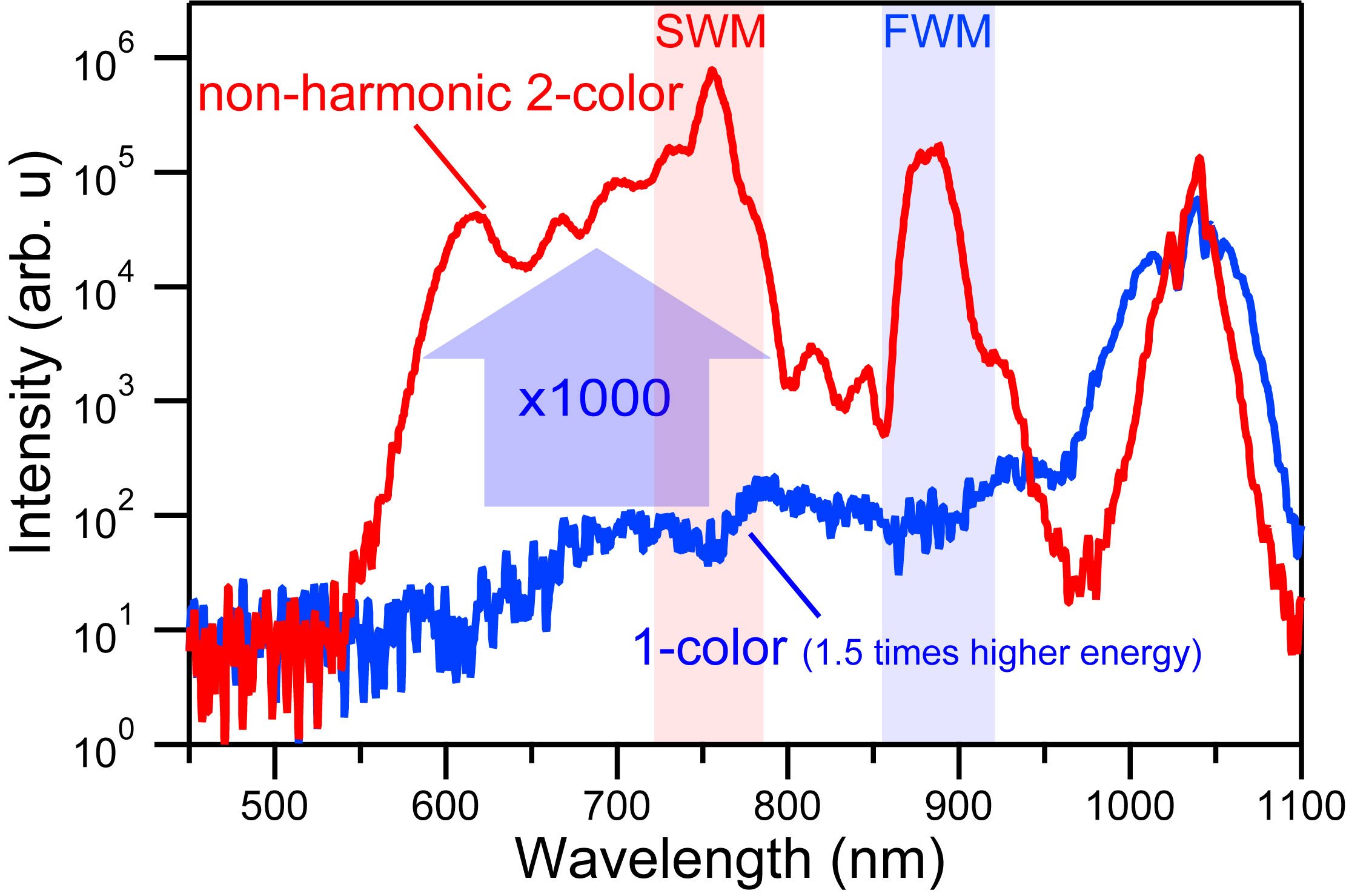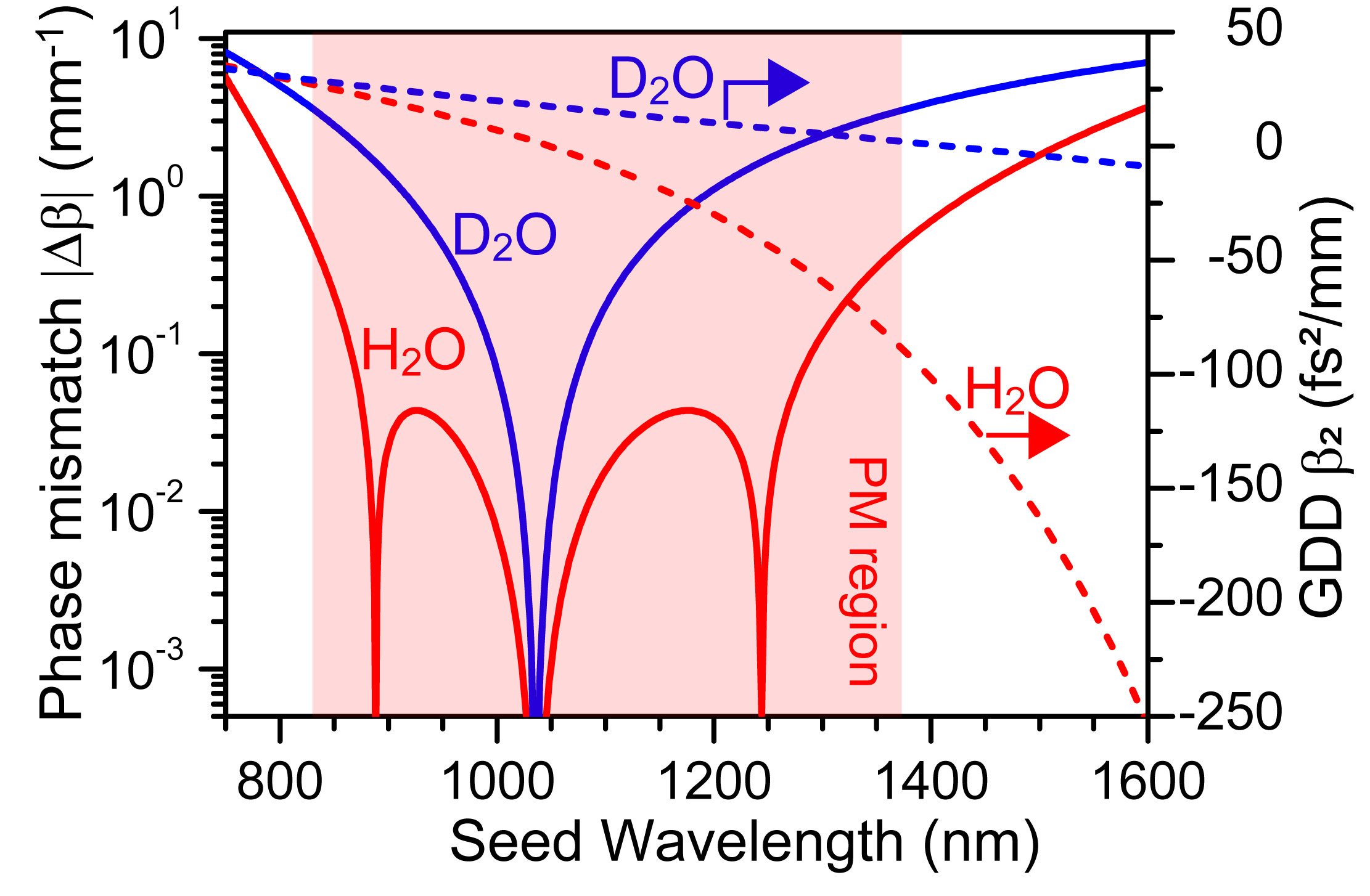New optical principle enables dramatically stronger supercontinuum in water, unlocking advances in bioimaging and ultrafast spectroscopy
Summary:
Scientists at Japan's Institute for Molecular Science have achieved a 1,000-fold enhancement in white-light generation inside water by using non-harmonic two-color femtosecond laser excitation. This previously unexplored approach in liquids unlocks new nonlinear optical pathways, enabling a dramatic boost in supercontinuum generation. The breakthrough lays a foundation for next-generation bioimaging, aqueous-phase spectroscopy, and attosecond science in water.
Researchers at the Institute for Molecular Science (NINS, Japan) and SOKENDAI have discovered a new optical principle that enables dramatically stronger light generation in water, achieving a 1,000-fold enhancement in broadband white-light output compared to conventional methods. The team used non-harmonic two-color femtosecond laser excitation, where the two laser wavelengths do not share an integer frequency ratio. While harmonic combinations (such as fundamental and second-harmonic light) are widely employed in nonlinear optics, this is the first demonstration that non-harmonic excitation in water can unlock a powerful regime of light-matter interaction.
By focusing two ultrashort pulses--1036 nm and a non-integer-related seed wavelength (e.g., 1300 nm)--into water, the researchers significantly amplified nonlinear optical effects including soliton compression, dispersive-wave emission, four-wave mixing, and cross-phase modulation. These cooperative effects produce an exceptionally bright supercontinuum, a rainbow-like white-light source crucial for ultrafast spectroscopy and imaging. Control experiments in heavy water (D₂O) showed no comparable enhancement, revealing that the effect is driven by water-specific dispersion and resonance conditions.
"By deliberately breaking the usual harmonic laser condition, we discovered a new way to amplify light inside water," says Dr. Tsuneto Kanai, lead researcher. "This opens an entirely new direction for ultrafast optics in liquids." Associate Professor Toshiki Sugimoto, the project's principal investigator, notes that "our finding offers a powerful approach to uncover phenomena of fundamental scientific and technological importance." The findings could accelerate breakthroughs in:
- ・deep-tissue biophotonics
- ・aqueous-phase and interfacial spectroscopy
- ・attosecond electron-dynamics studies in water
- ・optical sensing and nonlinear photonic technologies
This study establishes a new frontier in liquid photonics, using the world's most universal medium--water--as a platform for next-generation ultrafast optical science.
This work was released online as an Early Posting in Optics Letters on October 27, 2025. The study was conducted by the Institute for Molecular Science and SOKENDAI, Japan.

Figure 1: Dramatic enhancement of white-light generation in water using non-harmonic two-color excitation
Experimental demonstration that non-harmonic two-color femtosecond excitation produces a ~1,000× stronger supercontinuum in water compared to conventional single-color excitation. (Credit: Institute for Molecular Science / Tsuneto Kanai, Restriction: CC BY)

Figure 2: Dispersion and phase mismatch characteristics in H₂O and D₂O for four-wave mixing
Wavelength-dependent dispersion and phase-mismatch conditions for four-wave mixing in ordinary water (H₂O) and heavy water (D₂O). The figure illustrates how water's unique dispersion enables efficient nonlinear optical coupling under non-harmonic two-color excitation, while D₂O does not satisfy the same resonance and group-velocity matching conditions. This difference explains why the dramatic enhancement in supercontinuum generation occurs only in H₂O. (Credit: Institute for Molecular Science / Tsuneto Kanai, Restriction: CC BY)

Figure 3: Comparison of supercontinuum spectra generated in H₂O and D₂O
Measured white-light spectra generated in H₂O and D₂O under non-harmonic two-color excitation. A dramatic broadband enhancement is observed only in H₂O, demonstrating that the effect arises from water-specific dispersion and ultrafast interaction pathways. The absence of enhancement in D₂O confirms that subtle molecular and vibrational properties of water dictate the nonlinear optical response. (Credit: Institute for Molecular Science / Tsuneto Kanai, Restriction: CC BY)
Information of the paper:
Authors: Tsuneto Kanai*, ChengXiang Jin, Hibiki Tsunekawa, Atsunori Sakurai, Toshiki Sugimoto*
Journal Name: Optics Letters
Journal Title: "Dramatic Enhancement of Supercontinuum Generation in H₂O by Non-Harmonic Two-Color Excitation"
DOI: 10.1364/OL.575734
Financial Supports:
JST, PRESTO (JPMJPR1907)
JST, CREST (JPMJCR22L2)
JST, K Program (JPMJKP24W1)
JSPS KAKENHI, Grant-in-Aid for Scientific Research (A) (JP 21H04474, JP19H00865, JP22H00296)
JSPS KAKENHI, Grant-in-Aid for Scientific Research (B) (JP23H01855, JP 23K26570, JP 23H01877)
JSPS KAKENHI, Grant-in-Aid for Early-Career Scientists (JP20K15236)
Matsuo Science Foundation, The 35th Matsuo Foundation Grant
The Amada Foundation, General Research and Development Grant (AF-2022234-B3)
CASIO Science Promotion Foundation : Research Grant (38-06)
Research Foundation for Opto-Science and Technology Research Grant
National Institutes of Natural Sciences (NINS), International Research Exchange Support Program (314150403)
Contact Person:
Name: Tsuneto Kanai
TEL: +81-564-55-7287
E-mail: kanai-tsuneto_at_ims.ac.jp (Please replace the "_at_" with @)
Name: Toshiki Sugimoto
TEL: +81-564-55-7280
E-mail: toshiki-sugimoto_at_ims.ac.jp (Please replace the "_at_" with @)
3971
6229



